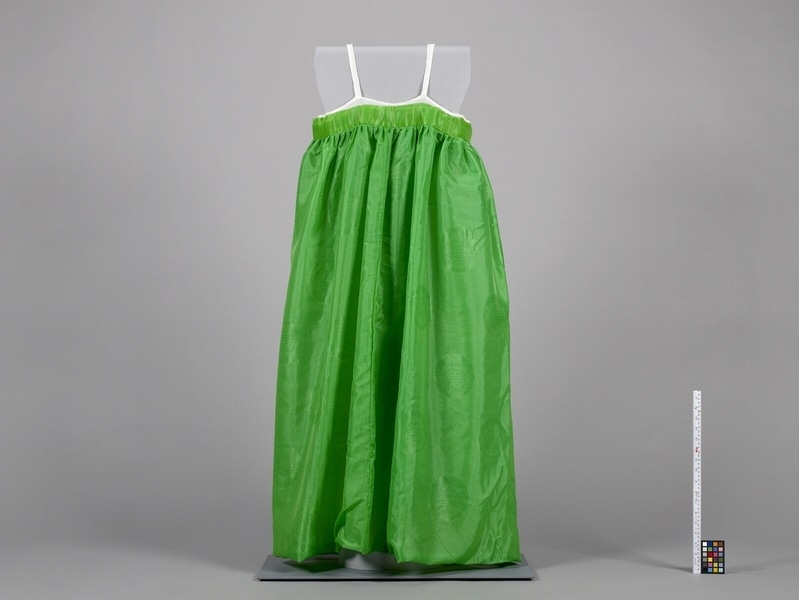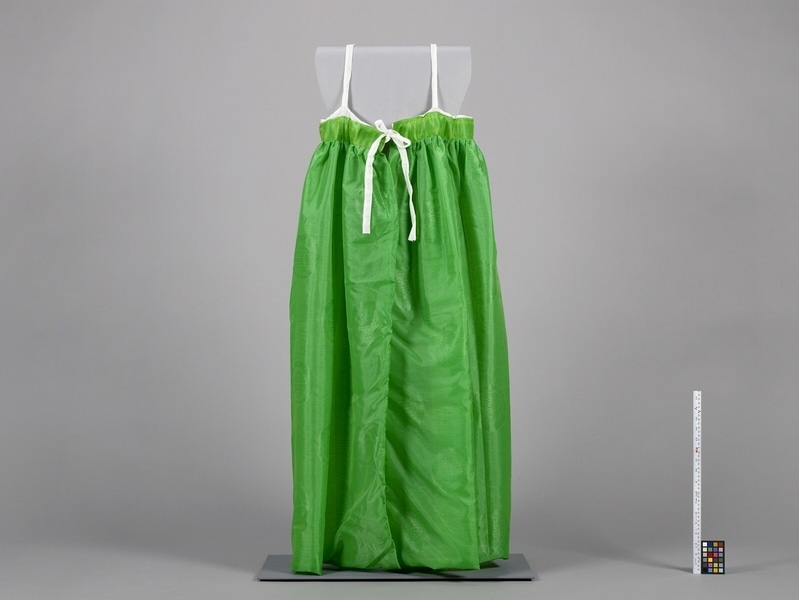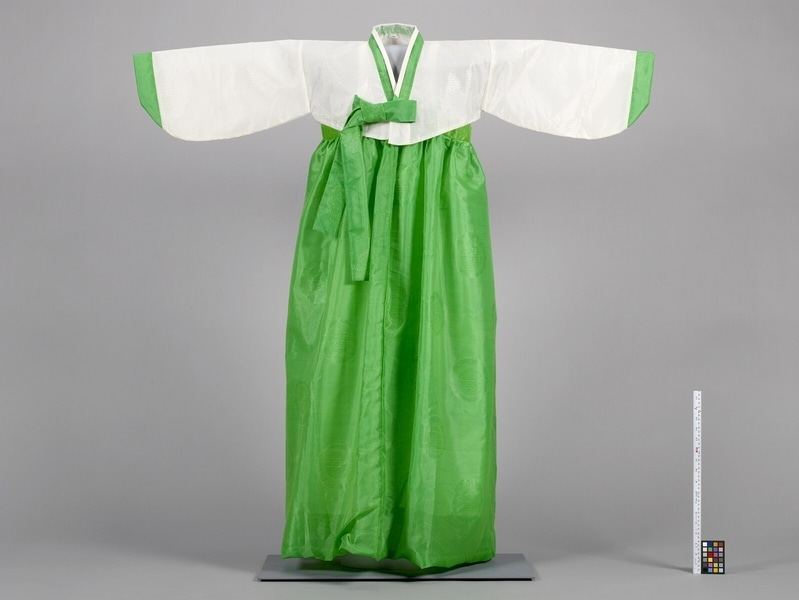Skirt Item Number: 376/1 from the MOA: University of British Columbia



Description
Green skirt of open weave. The skirt is made of two panels of green nylon fabric woven with roundels enclosing a floral motif and stylized character. The skirt is open at the back and lined with white nylon mesh. The panels are pleated and inserted into a green band. The green nylon band is woven with small roundels enclosing stylized characters and lined with white cotton gauze. The pleats carry through to the edge of the band on the left side, but not the right. The upper edge of the band is straight, but the white cotton gauze lining projects above it in slight scallops. Attached to the scalloped points are two shoulder straps of white cotton gauze. At both ends of the band are sewn narrow ties of white cotton gauze, roughly machine stitched with white thread.
History Of Use
The straps attached to the skirt band, which often was scalloped with the straps attached to the points of the scallops, were innovations introduced after the opening of Korea to the outside world in the late 19th century, replacing the simple waistband with long ties of the traditional “Chi-ma”. The new style was considered to be more modest, as it covered the breasts, and more comfortable. . Sets of “Chi-ma” and “Jo-go-ri” made of inexpensive synthetic fabrics in two colours and with very rounded sleeves were worn at this time by secondary school students and middle aged married women for occasions such as group dancing and village festivals. Other women would wear “Jo-go-ri” made of multiple colours. The Korean textile industry had developed to the point that it could produce such fabrics by this time. The skirt band was made of fabric of the same colour because it could be seen under the short jacket “Jo-go-ri”. In the Chosun Dynasty, a white skirt band and ties were considered to be beautiful, but this was no longer the case. By the late 1960s, Korean people generally wore simple clothing so that they could work more efficiently. During the 18 years that Park, Chong-hee was president, the transformation of South Korea from an agricultural country to an industrial one was accomplished, and people were urged to work hard. In compensation, people wore elaborate clothing on special occasions. Clothing of this kind was made in markets, and the relatively rough finishing, with the outer fabric folded under to hide the cheaper lining, is typical of that work.
Specific Techniques
The skirt is sewn with machine stitching.
Narrative
According to the donor, she purchased this set of clothing in a market in Seoul in 1970.
Item History
- Made in Korea before 1971
- Collected during 1970
- Owned by Freda Abrahamson before April 10, 1977
- Received from Freda Abrahamson (Donor) on April 10, 1977
What
- Name
- Skirt
- Identification Number
- 376/1
- Type of Item
- skirt
- Material
- nylon fibre, cotton fibre and dye
- Manufacturing Technique
- spun, dyed, woven, cut and sewn
- Overall
- height 112.0 cm, width 47.0 cm
Who
- Culture
- Korean
- Previous Owner
- Freda Abrahamson
- Received from
- Freda Abrahamson (Donor)
Where
- Holding Institution
- MOA: University of British Columbia
- Made in
- Korea
When
- Creation Date
- before 1971
- Collection Date
- during 1970
- Ownership Date
- before April 10, 1977
- Acquisition Date
- on April 10, 1977
Other
- Item Classes
- textiles
- Condition
- good
- Accession Number
- 0376/0001